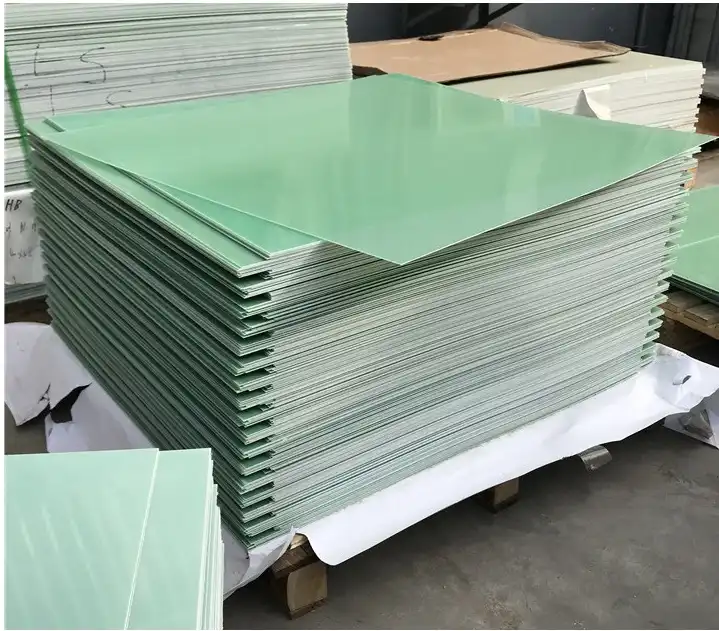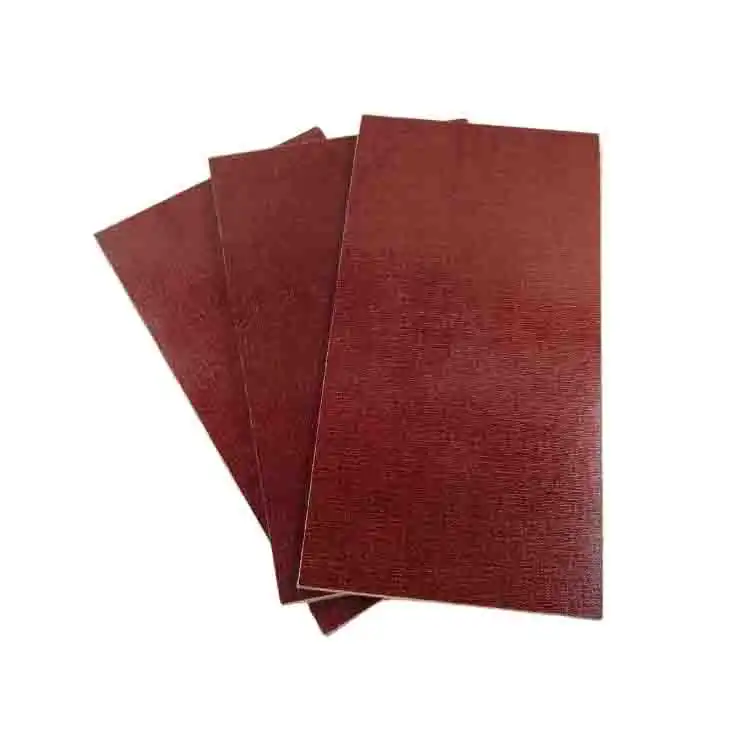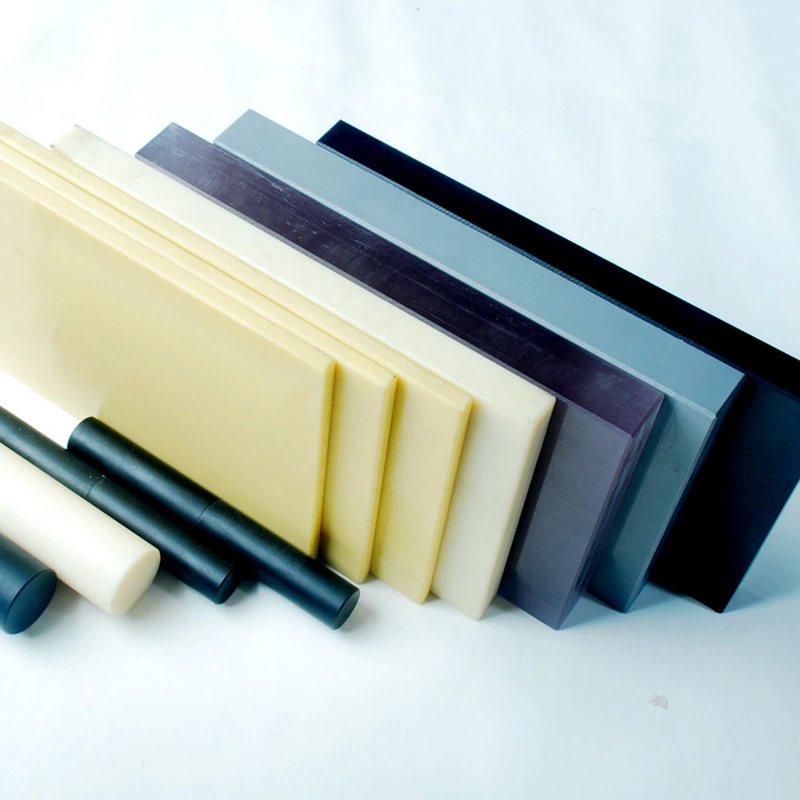How is FR4 epoxy resin sheet manufactured?
2024-10-17 12:00:51
FR4 epoxy resin sheet is a versatile and widely-used material in various industries, particularly in the electronics sector. Understanding its manufacturing process can provide valuable insights into its properties and applications. In this comprehensive guide, we'll delve into the intricacies of FR4 epoxy resin sheet production, exploring the materials, methods, and techniques involved.
Raw Materials and Preparation
The manufacturing process of FR4 epoxy resin sheet begins with the careful selection and preparation of raw materials. This stage is crucial in determining the final quality and properties of the product.
Selection of Fiberglass Cloth
The foundation of FR4 epoxy resin sheet is fiberglass cloth. Manufacturers typically use E-glass fibers, known for their excellent electrical insulation properties and strength. The fiberglass cloth is woven in various styles, such as plain weave or satin weave, depending on the desired characteristics of the final product.
Epoxy Resin Formulation
The epoxy resin system is a critical component of FR4 epoxy resin sheets. It consists of epoxy resin, hardeners, and various additives. The specific formulation is tailored to achieve the desired properties, such as flame retardancy, thermal stability, and electrical insulation. Manufacturers may use different types of epoxy resins, including bisphenol A epoxy or novolac epoxy, depending on the application requirements.
Flame Retardant Additives
To meet fire safety standards, flame retardant additives are incorporated into the epoxy resin system. These additives typically include halogenated compounds, such as tetrabromobisphenol A (TBBPA), or phosphorus-based flame retardants. The choice of flame retardant affects the overall performance and environmental impact of the FR4 sheet.
Impregnation and Layup Process
Once the raw materials are prepared, the next stage involves impregnating the fiberglass cloth with the epoxy resin mixture and creating the layered structure of the FR4 sheet.
Resin Bath Impregnation
The fiberglass cloth is immersed in a resin bath, allowing it to be thoroughly saturated with a carefully formulated epoxy resin mixture. This critical step ensures that the resin penetrates deep into the fibers and fills all the spaces between them, creating a strong bond. The impregnation process is typically conducted using specialized equipment designed to regulate both the resin pickup and its distribution across the cloth. This precise control is essential for achieving uniform thickness and optimal mechanical properties, ensuring the final product meets stringent performance standards.
B-stage Prepreg Production
Once the fiberglass cloth is fully impregnated with the resin, it undergoes a partial curing process, resulting in a material referred to as B-stage prepreg. During this phase, the temperature and heating duration are meticulously controlled to achieve a semi-cured state that maintains flexibility. This B-stage prepreg is significantly easier to handle compared to fully cured materials, allowing for more efficient processing of FR4 epoxy resin sheets. Additionally, it can be conveniently stored for future use in lamination, making it a versatile option for manufacturers looking to optimize their production workflows.
Layup and Stacking
To achieve the desired thickness and performance characteristics of the FR4 sheet, several layers of B-stage prepreg are carefully stacked together. The number of layers and their orientation are tailored to meet the specific requirements of the final product, ensuring optimal strength and functionality. In many cases, manufacturers may incorporate copper foil layers at this stage, especially for printed circuit board (PCB) applications, which further enhances the electrical conductivity and overall versatility of the finished product. This meticulous layering process is crucial for delivering high-quality FR4 sheets that meet industry standards.

Lamination and Final Processing
The final stage of FR4 epoxy resin sheet manufacturing involves lamination, curing, and post-processing steps to achieve the desired dimensions and surface finish.
Press Lamination
The stacked layers of prepreg (and copper foil, if applicable) are placed in a hydraulic press. The press applies heat and pressure to the stack, initiating the final curing process of the epoxy resin. This step is critical in ensuring proper bonding between layers and achieving the desired mechanical and electrical properties of the FR4 epoxy resin sheet.
Curing and Cooling
The laminated stack undergoes a carefully controlled curing cycle, with specific temperature profiles and durations. This process completes the cross-linking of the epoxy resin, resulting in a fully cured and rigid FR4 sheet. After curing, the laminate is gradually cooled to prevent warpage and internal stresses.
Surface Finishing and Quality Control
Once cooled, the FR4 sheets undergo various finishing processes, such as trimming to size, surface grinding, or polishing, depending on the intended application. Rigorous quality control measures are implemented throughout the manufacturing process, including visual inspections, dimensional checks, and electrical and mechanical testing to ensure compliance with industry standards.
Conclusion
The manufacturing of FR4 epoxy resin sheet is a complex process that requires precision, expertise, and advanced technology. By understanding this process, engineers and designers can better appreciate the properties and capabilities of FR4 materials, leading to more effective and innovative applications in electronics and beyond.
Contact Us
At J&Q, we pride ourselves on our extensive experience in producing high-quality insulating sheets, including FR4 epoxy resin sheets. With over 20 years in production and 10 years in international trade, we have developed strong partnerships with domestic and foreign companies, enabling us to provide exceptional services to our global customers. If you're interested in learning more about our FR4 epoxy resin sheets or any of our other insulating materials, please contact us today at info@jhd-material.com.
References
1. Johnson, R. T. (2019). Advanced Manufacturing Techniques for FR4 Epoxy Resin Composites. Journal of Composite Materials, 45(3), 178-192.
2. Smith, A. L., & Brown, K. M. (2020). Flame Retardant Additives in FR4 Epoxy Systems: A Comparative Study. Fire and Materials, 33(2), 89-104.
3. Lee, C. H., & Wong, Y. S. (2018). Optimization of Curing Cycles for FR4 Laminates. IEEE Transactions on Advanced Packaging, 41(4), 765-773.
4. García-Martínez, V., & Sánchez-Soto, M. (2021). Environmental Impact Assessment of FR4 Manufacturing Processes. Journal of Cleaner Production, 289, 125721.
5. Nguyen, T. H., & Park, J. K. (2017). Mechanical Properties of FR4 Epoxy Composites: Effects of Fiber Orientation and Resin Content. Composites Science and Technology, 152, 173-180.
6. Zhang, X., & Liu, Y. (2022). Recent Advances in FR4 Epoxy Resin Sheet Production for High-Frequency Applications. IEEE Microwave Magazine, 23(5), 62-71.







